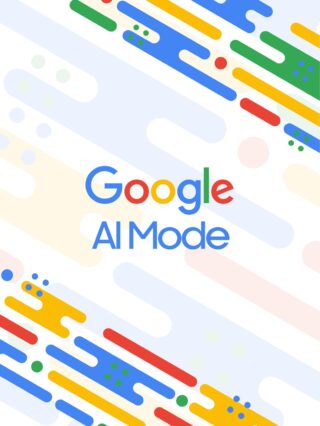Blink and you might miss it. That’s how fast the digital marketing landscape is changing, making it even more important for marketers to stay on top of industry trends and constantly evolve their marketing plans of attack.
A mistake we often see companies make when determining their digital marketing plans is to silo their efforts into one singular strategy instead of taking a holistic approach. Consolidating all your time, energy, and budget into one effort can make it much harder for your intended audience to find you and restricts your brand’s voice from growing into a powerhouse within your industry.
So, what does a holistic approach entail? In terms of capturing “hand raisers,” utilizing both Search Engine Optimization (SEO) and paid search in tandem is one perfect example. Although one is paid and the other organic, it can be helpful to consider these two facets of digital marketing as just “search.” After all, they both share the same primary objectives:
- Tap into search engines to boost your business
- Gain new customers
- Increase brand awareness and authority
There are plenty of ways in which SEO and paid search complement each other to create a successful holistic search strategy. Here are five ways SEO and paid search can work together to provide improved results from your search marketing efforts.
Targets Users in all Stages
A search engine is a problem-solving machine. Users tell the search engine their problem and the search engine tries to give them the most relevant answers. But the problem the customer is looking to solve may not correspond to an immediate business or marketing goal. When it comes to converting potential customers, it is important to align your digital marketing efforts with the users’ intent, meaning understanding the “why” behind the query. Customers will make different searches depending on which stage of decision making they are in. Here are the typical stages:
- Awareness: At the top of the marketing funnel, an ideal customer’s search intent is to research and learn general information about a product or service.
- Consideration: Those in the middle of the funnel will investigate more specific benefits that come with choosing a particular product or service.
- Decision: Customers in the lower end of the funnel are ready to make a purchase or take action.
So, what is the difference between SEO and paid search? Paid search is a pay-to-play system where advertisers bid on specific keywords searches and display ads on Search Engine Results Pages (SERPs). On the flip side, SEO is the practice of optimizing your website for enhanced usability and visibility within the SERPs. A strong website will provide useful, relevant, and informative content for customers, no matter which level of the funnel they are in. The more optimized your site is, the higher your rank, or position, in the SERPs.
Capitalizes on Keywords
Paid search and SEO are often treated as two entirely separate entities. But the reality is that they work best in tandem. When researching keywords to bid on for paid search, those keywords can also be optimized for an SEO strategy and vice-versa. If a site isn’t currently ranking well for a desired keyword, paid efforts can help bridge the gap. On the other hand, if desired keywords are unattainable on the paid side due to cost limitations, you can incorporate them into your website using valuable content to capture that traffic organically with SEO.
Doubling down on successful keywords will make it easier to enhance and improve your organic content, meaning you can use these “money keywords” in title tags, headings, meta descriptions, and blog content for the webpages you want to amplify.
Additionally, paid search is a great tool to use when it comes to testing content ideas. You can easily incorporate various keywords into your ad copy to test content variations.
Maximizes SERP Real Estate
Perhaps the most obvious advantage of having an integrated paid and organic approach to search is the ability to increase visibility within the search engine results pages. By utilizing both complementary strategies, you can increase your share of click volume by more than just using one or the other.
Getting your brand in front of users as frequently as possible naturally leads to increased awareness and more engagement with your site. Each additional listing, whether it’s organic or paid, in part serves to reinforce a brand’s authority on the subject of the query. This authority can instantly build trust with searchers.
In addition, occupying more of the finite space on the first page of search results naturally blocks out competition. This is where keyword strategy again becomes important. Understanding where gaps exist (that is, on which keywords competition is lower) presents clearer opportunities to dominate the SERP—and your competitors.
Having more and diversified results in the SERP increases the chances we are going to have a relevant result regardless of what stage the user is in. Plus, dominating the SERPs within both the paid search ads and the organic results will give the impression your brand is an established presence in your market.
Builds Trust
Now that our lives are online, it is hard to stick out as a big fish in a large pond. In a consumer’s eyes, there is always another choice and another brand to pay attention to. One way to boost potential customers choosing your brand is to build trust, and there is no better method than to employ a joint paid search and SEO strategy.
First, having an SEO content strategy focused around answering questions can make your brand seem more reliable and helpful and less salesy and pushy. The beauty of creating your own content is that you can tailor it to be as specific or as broad as possible, and it is always in a brand’s best interest to create both. Promoting a variety of content, such as infographics and blog posts, can help to answer a potential customer’s questions. Answering questions based on search intent is an easy way to build trust; this shows that you are positioning yourself as a thought leader within your industry and as someone who cares about sharing information, rather than as just another company that wants to sign up as many users as possible.
It is also important to consider the platform you are advertising on. Google is a household name–so much so that it’s commonly used as a verb–and people tend to trust the results they get when searching on Google. Having your brand show up in more than one single result is interpreted as being more reputable in users’ eyes. The trust they have in Google will therefore be extended to your brand.
Works With Any Marketing Budget
The beauty of paid search and SEO is that you can mold your marketing efforts to fit exactly within your marketing budget. Since both tactics work in tandem with each other so naturally, you’ll be able to work within their capabilities to create a marketing campaign that fits your budget.
For example, paid search is pay per click (PPC). Whether a campaign runs for 10 minutes or for 10 years, and no matter how broad or how optimized the campaign is, you will always pay for every paid advertising click that comes to your website. However, with SEO, you can invest money in a different way. Implementing UX design, integrating keywords through a strong content strategy, and building backlinks is a one-time cost that keeps on giving as the domain becomes stronger. Once a website is fully optimized for organic search, you’ll be able to generate traffic on articles you wrote years ago, while the fixed expense for creating that content will never increase.
So, with every new click you get from SEO, your cost per click (CPC) decreases. Paid search will help generate short-term boosts of traffic. But SEO builds value and ROI over time.
In summary, the link between SEO and paid search strategies is simple: When you integrate your efforts, your marketing campaigns will only benefit. This just goes to show that a successful digital marketing campaign cannot be siloed; and when SEO and paid search come together, they are greater than the sum of their parts.
At Butler/Till, we get marketing so the world gets you. We’re a results-driven marketing agency and we solve our clients’ business problems using our deep and ever-expanding expertise in all forms of communication. We understand that today’s sophisticated media landscape requires new ways of thinking, so if you have questions on how SEO and paid search can help you reach your marketing goals, give us a shout. We can’t wait to chat.





